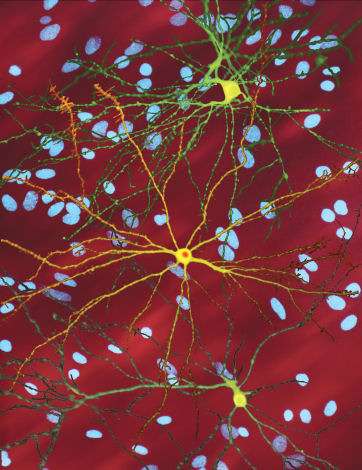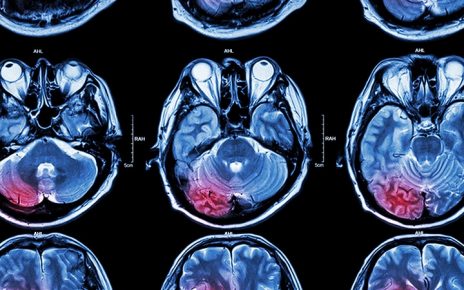
In a new study published in Brain Prof. Xi Chen from Nanjing University and Prof. Zhong Pei from Sun Yat-sen University report the therapeutic reversal of Huntington’s disease by in vivo self-assembled siRNAs.
Huntington’s disease is caused by a CAG repeat expansion in exon 1 of the huntingtin (HTT) gene that leads to expression of mutant HTT (mHTT) protein. mHTT protein aggregates into intracellular inclusion bodies to induce neuronal death primarily in the cortex and striatum. Although the genetic origin of Huntington’s disease has been recognized for more than 20 years, there is no treatment that can cure or slow the course of this disease.
Recently, oligonucleotide-based therapeutic approaches using small interfering RNAs (siRNAs) and antisense oligonucleotides (ASOs) have provided promising therapeutic outcomes in reducing the toxic mHTT in preclinical studies, but some major challenges remain to be overcome to realize the full potential of oligonucleotide therapeutics in Huntington’s disease.
For example, oligonucleotides have to be directly delivered into the brain or spinal fluid through invasive strategies; however, oligonucleotides were poorly distributed to the striatum, a deep brain structure that is the most severely affected brain structure in Huntington’s disease. Therefore, a convenient, effective and safe delivery strategy is needed to improve the deep brain distribution and neuronal uptake of oligonucleotide therapeutics.
In this study, the joint research group designed the synthetic biology circuits to reprogram mouse livers to direct the synthesis and self-assembly of mHTT siRNAs into secretory exosomes and facilitate the delivery of exosome-enclosed mHTT siRNAs to the cortex and striatum.
The therapeutic value of this strategy was confirmed by efficient silencing of mHTT protein and remove of toxic aggregates in the cortex and striatum, thereby ameliorating behavioral deficits and striatal and cortical neuropathology in three mouse models of Huntington’s disease. Overall, this study establishes a convenient, effective and safe strategy for self-assembly of siRNAs in vivo that may provide a significant therapeutic benefit for Huntington’s disease.
The scientific significance of these findings is highlighted below:
(1) Synthetic biology circuits were formed as naked DNA plasmids and simply administered through i.v. injection; then, mHTT siRNA was spontaneously produced by liver cells and transferred through the exosome-circulating system. This design borrows the body’s own small RNA assembly and transport machineries and avoids the invasive procedures and safety concerns associated with conventional delivery techniques, which may open up new avenues for future treatment of Huntington’s disease.
(2) This study provided the groundwork for spreading siRNAs to the deep brain regions to counteract toxic protein aggregation. Since protein aggregation is the hallmark of many neurodegenerative diseases, in vivo self-assembled siRNAs are expected to accelerate the development of therapies for other neurodegenerative diseases, such as Parkinson’s disease and Alzheimer’s disease.
Source: Read Full Article



